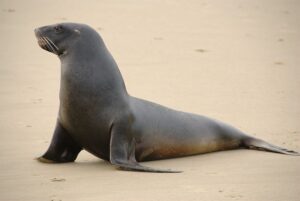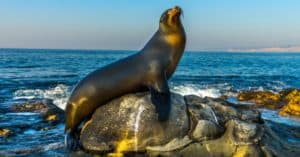Sea lions are found mostly in coastal areas where the weather is agreeable most of the year. The six species of sea lions that exist differ from similar animals like seals by their small ear flap on the sides of their heads. Additionally, sea lions can use their hind flippers to move across land much more easily than seals. As you’ll see, most sea lion’s common names are derived from the locations they inhabit. Continue reading to learn a bit more about sea lions and their worldwide range.
California Coast
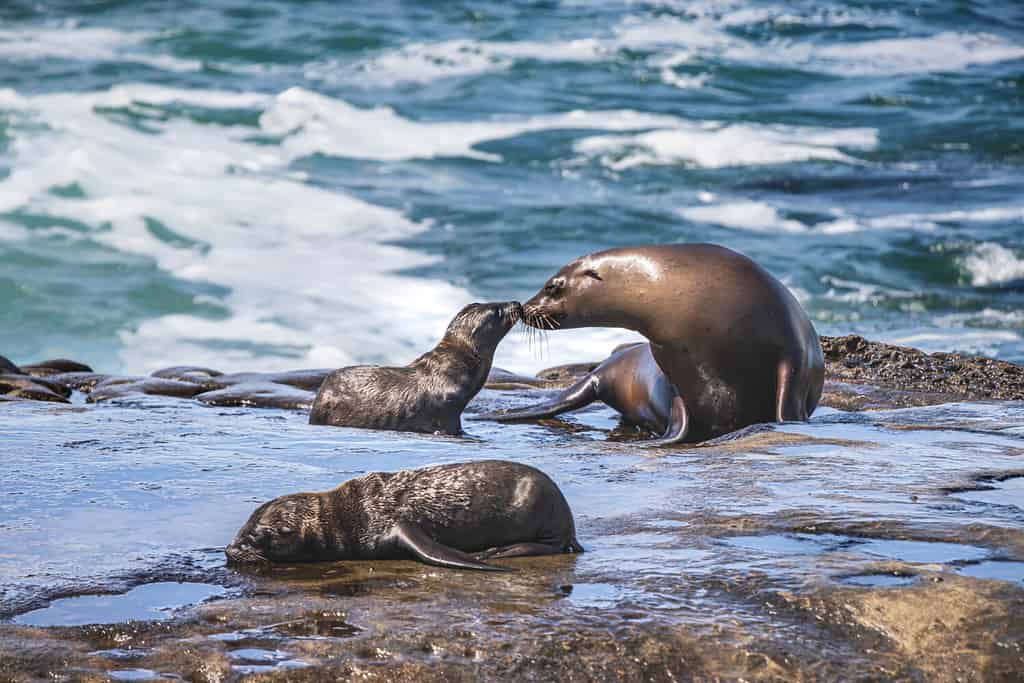
Sea lions enjoy basking on rocks after swimming and hunting for food.
©PradaBrown/Shutterstock.com
California sea lions (Zalophus californianus) live all along the western coast of North America ranging up to Southern Canada and down to Northern Mexico. They also reside in Korea and Japan.
Males can reach around 8 feet long and 1,000 pounds. Additionally, males migrate during winter. In the winter months, male California sea lions move to British Columbia, Southeastern Alaska, and some of the coasts of the Pacific Northwest states.
The Steller sea lion (Eumetopias jubatus), another species that lives off California’s west coast, has a habitat reaching out towards Japan and Russia’s east coast. They can also be observed in the Aleutian Islands. This species is known as the northern sea lion. It’s the largest species of sea lion, with adult males reaching up to 11 feet long and weighing in at 2,500 pounds! Females can get up to 800 pounds and over 9 feet long. Contrary to California sea lions, this species does not migrate but has a wider range than its California counterpart.
To tell the two species apart, you’ll have to rely on size and color. While the Steller sea lion is much larger than the California sea lion, they also have a lighter-colored coat.
Galapagos Islands

Young Galapagos sea lions are a beautiful chestnut color that gets darker later in life.
©Thomas Debay/Shutterstock.com
The Galapagos sea lion (Zalophus wollebaeki), as the name of this species suggests, lives in and around the Galapagos Islands. They rarely migrate out of this warm climate and are endemic to this region.
This set of islands hosts a unique set of animals. This is in part due to its isolation, which can make migration difficult for many of the islands’ inhabitants. A lack of migration can lead to smaller gene pools, and some birds have even evolved to be flightless. It is also home to notable species like the Galapagos tortoise and marine iguanas.
The Galapagos sea lion is actually the largest mammal present on the island. In fact, they’re one of the few mammals that even exist on the island! However, it is still the smallest of the six species of sea lions, weighing in at 550 pounds on average for an adult male. Females are smaller than males, but it might be easier to tell the difference from the bump present on the male’s forehead.
Australia’s Southern and Western Coasts
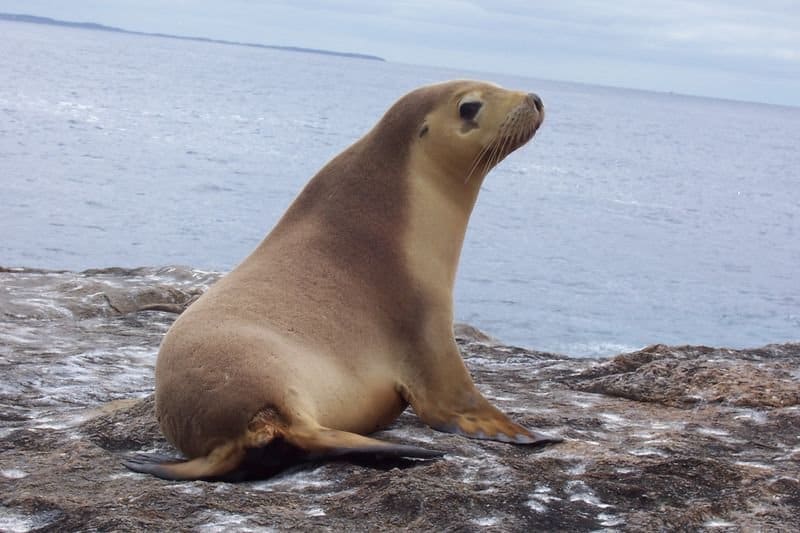
The “mane” on a sea lion are the lighter portions around the head, face, and neck.
©User Bmh ca on en.wikipedia / CC BY-SA 3.0 – License
Australian sea lions (Neophoca cinerea) inhabit the southern and western coasts of Australia. Kangaroo Island is a popular place to see these animals lying about, diving into the water, and interacting with each other. This species also lives in Tasmania, though numbers are few. Australian sea lions are also a non-migratory species.
Male Australian sea lions have a dark coat with light-colored areas on their head and neck. Females have a more grey or light brown coloration about them and a lighter color on their undersides. Additionally, males are about double the size of females. This sexual dimorphism can make telling them apart fairly simple.
New Zealand
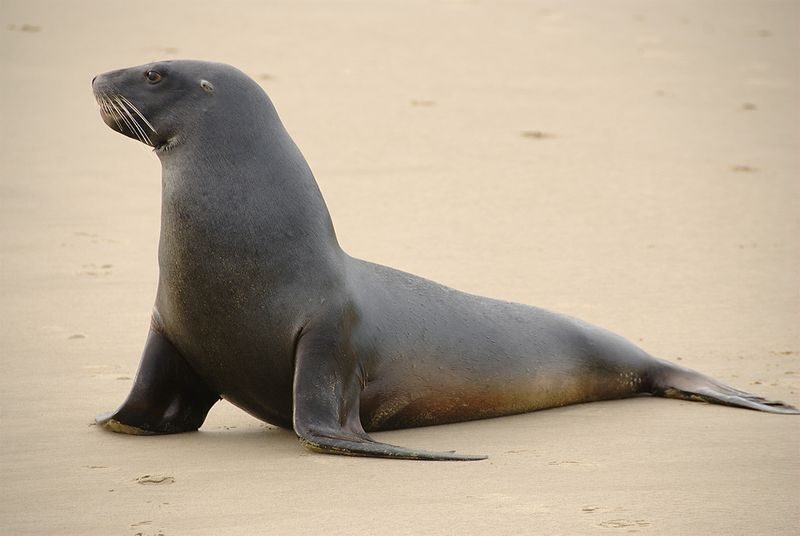
The New Zealand sea lion is much darker in color than the Australian sea lion.
©Karora, Public domain, via Wikimedia Commons – License
Phocarctos hookeri, or the New Zealand sea lion, lives exclusively along New Zealand’s coastline, making their range the smallest out of any sea lion species.
Despite its close proximity to Australia, the New Zealand sea lion is not that similar to the Australian sea lion. They’re smaller than their Australian relatives and are dark brown or black in color.
The Auckland Islands are the best place to see these creatures, with about 68% of their entire population born here. This is another non-migratory species, though males can increase their range during the non-breeding months of the year.
South America’s Western and Lower Eastern Coasts
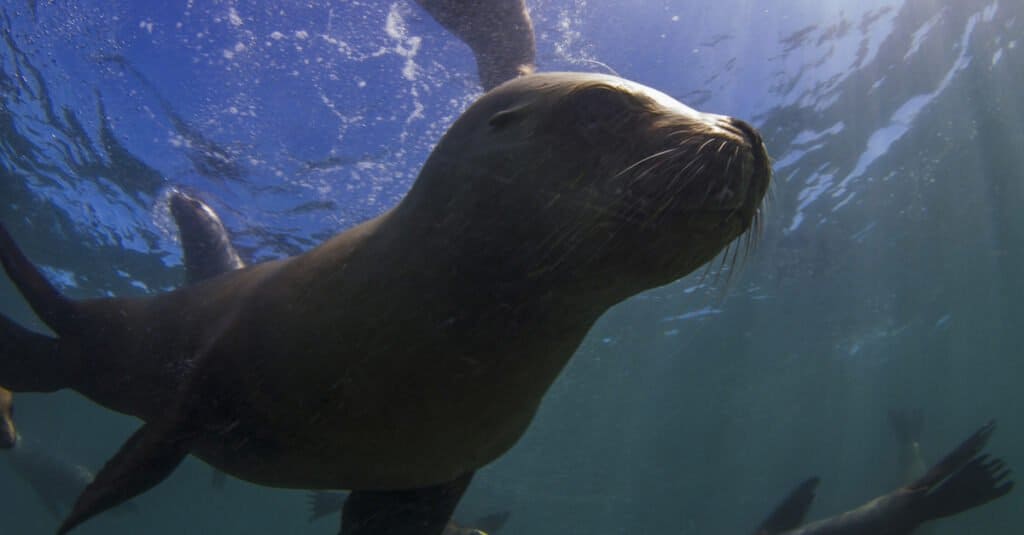
Sea lions can hold their breath underwater for anywhere between 8-20 minutes.
©Foto 4440/Shutterstock.com
Sea lions hang around the coast of South America and in the Pacific waters of the lower eastern and western coasts. They also live around the Falkland Islands. Most commonly referred to as South American sea lions (Otaria flavescens) and less commonly “Patagonian sea lions”, they are most often seen on the coasts of Peru, Chile, and Argentina.
There doesn’t appear to be great evidence suggesting the males of this species engage in migratory behavior after the breeding season. Instead, they seem to stick close to their home and venture out for forage but always return shortly after their trip starts.
Most of the six species of sea lions live in coastal regions of the Pacific Ocean. The exception is the South American sea lion, which lives in the Falkland Islands of the Atlantic Ocean. Most of the species are non-migratory, except for the California sea lion.
The photo featured at the top of this post is © NatureDiver/Shutterstock.com
Thank you for reading! Have some feedback for us? Contact the AZ Animals editorial team.



